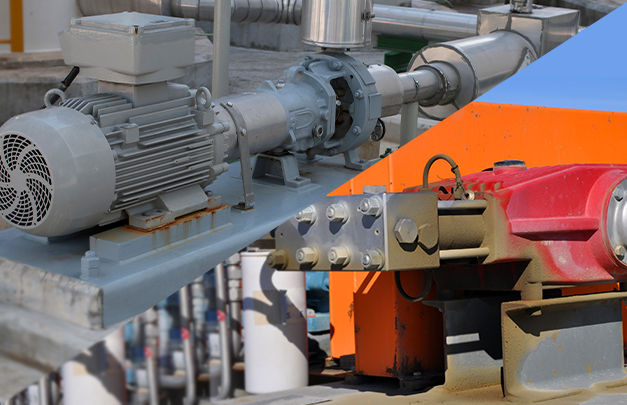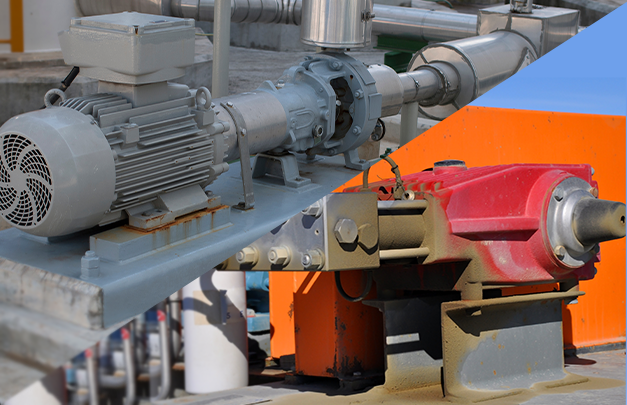
What are the main differences between centrifugal and reciprocating industrial pumps? From pump construction and design to operation and reliability, centrifugal and reciprocating pumps offer different benefits and therefore have different ideal applications. Here we break down some of those differences to help you select the pump that best suits your needs.
A brief history of centrifugal and reciprocating pumps
The first machine that could be classified was a mud lifting machine that appeared in a late 15th century treatise by the Italian Renaissance engineer Francesco di Giorgio Martini. However, the first true incarnation of a centrifugal pump was developed about 200 years later by French-born inventor Denis Papin. Papin’s version used straight vanes for local drainage and was the first modern attempt at creating a centrifugal pump.
The evolution of the reciprocating pump reaches further back into history than its centrifugal counterpart. Greek inventor and mathematician Ctesibius invented what was then called a water organ in about 200 BC. This invention used an air pump with valves on the bottom, a water tank between the valves, and a row of pipes on top. This design was the blueprint for the modern reciprocating pump.
The design and engineering of centrifugal and reciprocating pumps
Centrifugal pumps leverage a simple design concept based on a rotating impeller that imparts kinetic energy to the fluid with a static pump casing that collects it, slows it down, and converts it into pressure, commonly referred to as discharge head. The resulting flow is steady and continuous because the impeller spins at a constant rotational speed across 360 degrees in the pump casing. Centrifugal pumps use either a single impeller, a single impeller with high-speed options, or multiple impellers for increased capacity. This impeller-based design means fluid movement and volumes can be controlled based on the needs of the application, and this simplified construction with few moving parts lends itself to a longer service life with little or no degradation over time.
Reciprocating pumps, on the other hand, use a reciprocating crankshaft mechanism that leverages either pistons or plungers to draw in and draw out a fixed volume of fluid. The complexity of the crankshaft and piston/plunger design does require maintenance throughout the course of the pump’s life and can be prone to wear-and-tear from use in the field.
Centrifugal vs. reciprocating pumps: pump flow and control
With centrifugal pump flow and control, a steady, continuous flow of fluid is achieved from constant impeller rotation. High-viscosity fluids are not ideal for use with centrifugal pumps. A valve installed on the pump discharge is used to control the pump output, which means overall pump efficiency is considerably low compared to reciprocating pumps — about 30% to 70% — due to friction losses in operation.
The flow of a reciprocating pump is intermittent and pulsating as a result of the reciprocating mechanism, which allows reciprocating pumps to pump higher-viscosity fluids — in fact, overall pump performance is actually increased when using higher-viscosity fluids. Reciprocating pumps also function at a much higher level of efficiency — in the range of 65% to 85% — thanks to fluctuations in both the speed and stroke length of the piston or plunger.
Centrifugal vs. reciprocating: footprint, cost, and other considerations
The cost of a centrifugal pump is generally higher than that of a reciprocating pump, due to the use of precision-engineered components necessary for high-speed applications. (For example, the Sundyne OH6 integrally geared high-speed pump can go as high as 24,000 rpm.) Reciprocating pumps operate at lower speeds and cost less.
Another benefit of centrifugal pumps, however, is their smaller size and low weight. Due to their smaller footprint and less heavy foundation, installation cost is low. Reciprocating pumps, on the other hand, typically have a larger footprint, and a heavier foundation is required. Their installation cost is comparably high.
Categories of centrifugal and reciprocating pumps and their ideal applications
As per API 610, there are 18 types of centrifugal pumps classified into three distinct categories:
- Overhung centrifugal pumps use a single impeller installed on a shaft that is suspended at one end of the pump by a single bearing, thus resulting in the pump being “overhung” from its single support bearing.
- Between bearing centrifugal pumps also use a single impeller, but instead deploy a bearing at each end of the shaft, with the impeller mounted in between the bearings. This configuration generally results in slightly greater efficiency compared to overhung centrifugal pumps.
- Vertical suspended centrifugal pumps are single-stage pumps that are designed to be mounted vertically. These pumps are often used in harsh environmental conditions or applications where pumps are placed under duress for extended periods.
With reciprocating pumps, there are three classifications most commonly seen with industrial applications per API 674, which defines minimum and maximum speeds, pulsation and vibratory control compliance, and testing requirements. The three common classifications of reciprocating pumps include:
- Piston reciprocating pumps use a high-pressure seal that reciprocates in conjunction with the piston. With a piston pump, high-pressure operation can be achieved without impacting flow rate.
- Plunger reciprocating pumps use a stationary high-pressure seal in conjunction with a plunger mechanism. The stationary nature of the seal allows for use in higher-pressure applications compared with piston-style pumps.
- Diaphragm reciprocating pumps operate through the reciprocating action of a rubber, thermoplastic, or teflon diaphragm with valves fixed to either side of the diaphragm.
Centrifugal pumps create the highest levels of efficiency and value in applications and services that feature lower-viscosity fluids such as waters, solvents, oils, acids, bases, and other thin liquids. With reciprocating pumps, ideal use centers on high-pressure applications in the oil and gas, chemical processing, mining, and production industries.
IPEC has more than 70 years of industrial pump solution knowledge, expertise, and service. Our partnerships with industry standard brands Sundyne, Marelli, Fybroc, Yamada, and Milton Roy allow us to offer the most innovative, state-of-the-art centrifugal and reciprocating pumps on the market today to help you achieve superior process optimization and productivity.
Learn more about how our centrifugal and reciprocating pump solutions can help you unlock new growth opportunities.

